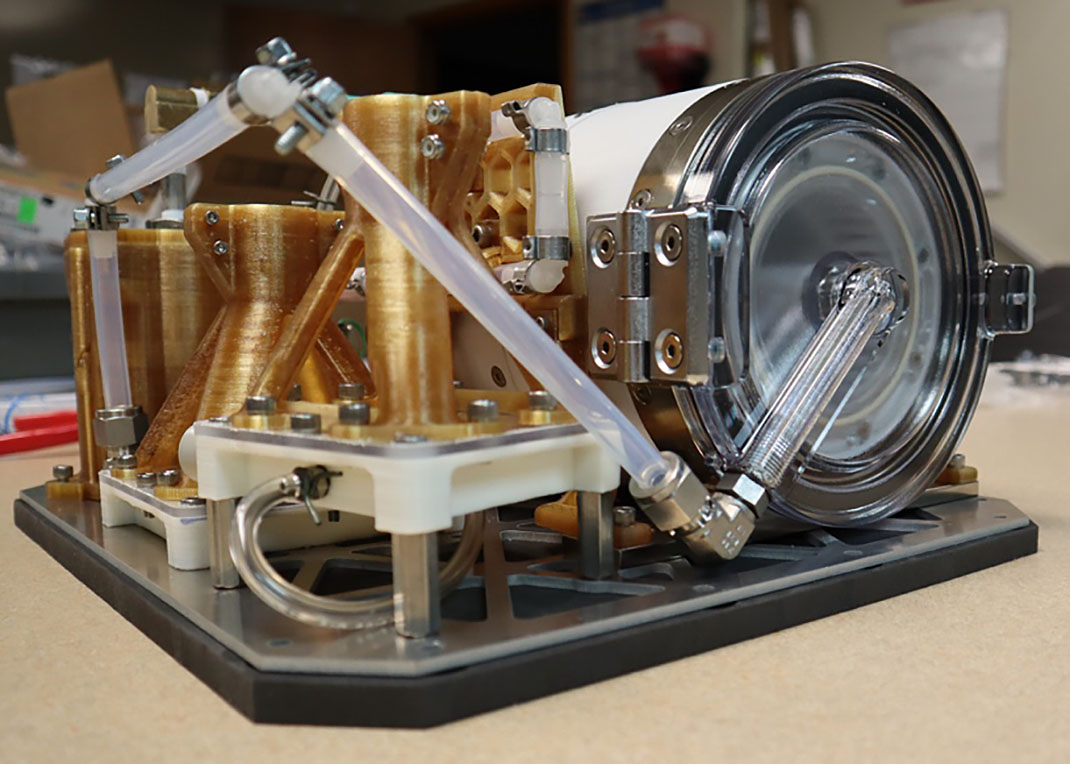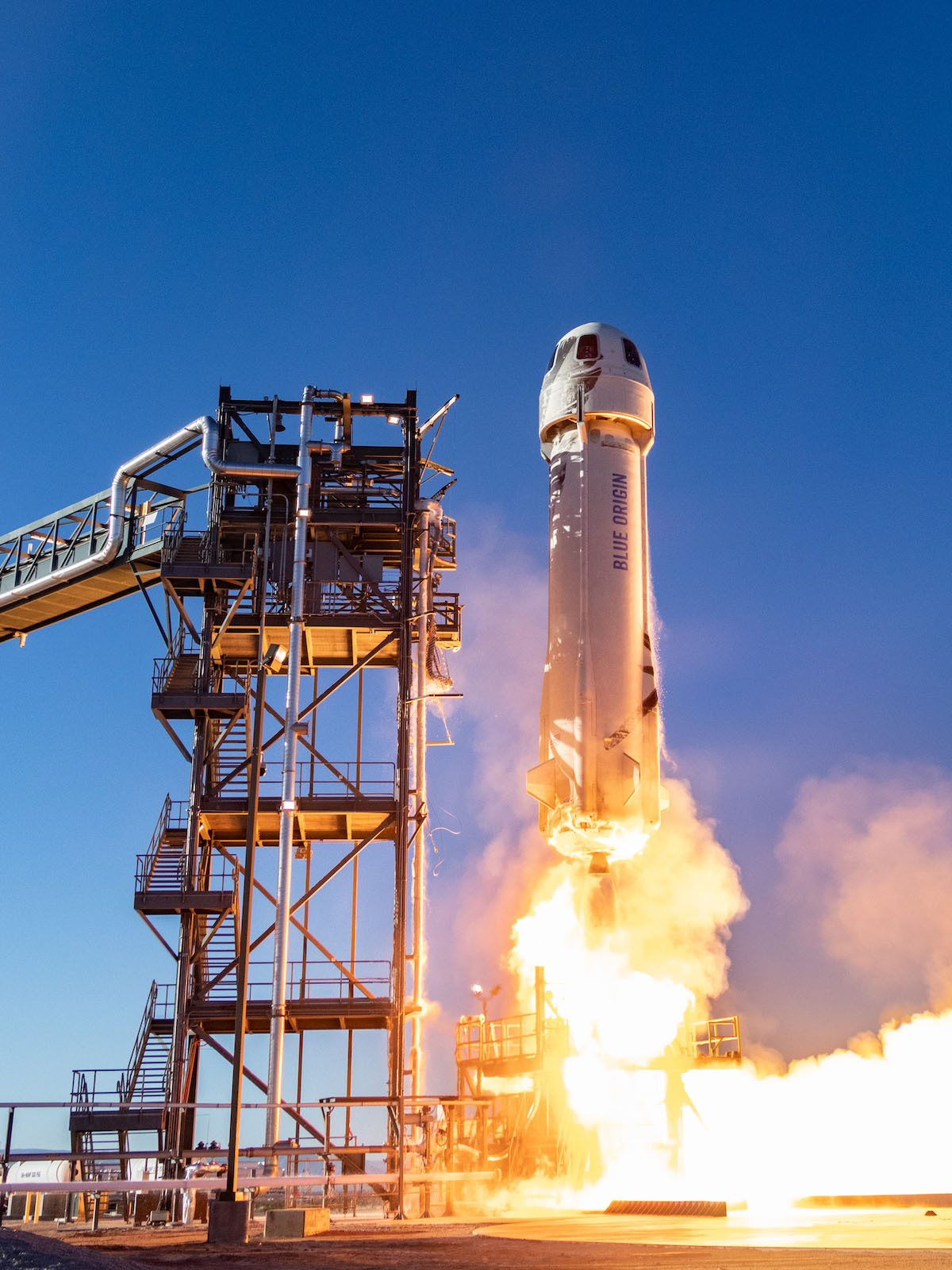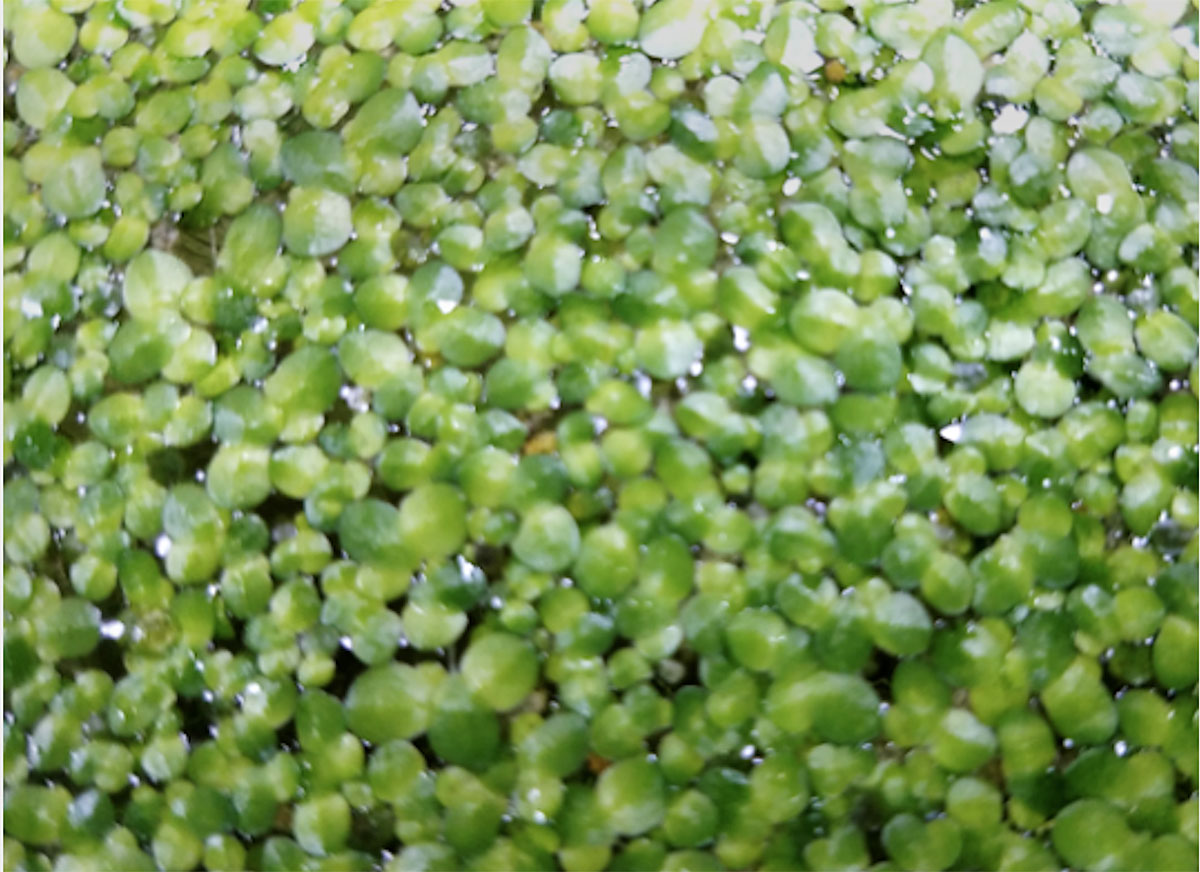Editor’s Note: The Sept. 24 launch attempt was scrubbed. Blue Origin’s New Shepard (NS-13) mission successfully launched and landed Tuesday, Oct. 13, 2020. Visit Blue Origin’s YouTube channel to view the Oct. 13 launch webcast.
It’s no surprise to most of us that regularly eating fresh produce is a great way to support a healthy diet. Fresh fruits and vegetables benefit astronauts on the International Space Station, too – and soon the Moon and beyond. Scientists are investigating sustainable ways to grow highly nutritious foods in microgravity, to give space explorers a readily available supply of daily greens.
On an upcoming flight facilitated by the Flight Opportunities program, part of NASA’s Space Technology Mission Directorate, Space Lab Technologies will test their microgravity LilyPond, a hydroponic chamber for growing edible aquatic plants in space. Along with several other technologies selected for testing, LilyPond will launch on Blue Origin’s next New Shepard mission. The payloads will fly to space and experience several minutes of microgravity before returning to Earth, giving researchers valuable data about how their technologies perform.
Blue Origin is targeting Thursday, Sept. 24, at 11:00 a.m. EDT for the New Shepard launch.
“In space, we need crops that produce a lot of nutritious material with minimal resources and volume – and those that can grow very fast, tolerate environmental extremes, and of course taste good are even better,” said Christine Escobar, vice president of Space Lab and principal investigator for the microgravity LilyPond.

Looking at these parameters, Space Lab zeroed in on duckweed (also known as water lentils) – as their test crop. With its high protein content (up to 45%) and a rich supply of antioxidants, amino acids, and Omega-3s, the crunchy vegetable is sometimes called a superfood. Escobar said these rapidly growing plants are ideal for space because they do not require soil or another growing media – which means fewer materials, less mass, and less waste for resource-intensive space missions. But realizing the promise of such plants requires the right technology.
“The two biggest issues with growing a floating aquatic plant in space are providing a stable water surface that is open to the air, and harvesting the plant,” explained Escobar.
In the absence of gravity, getting water to stay where you put it can be a challenge. To address this issue, Space Lab began developing the microgravity LilyPond in collaboration with the University of Colorado at Boulder in 2017 with funding from NASA’s Small Business Innovation Research/Small Business Technology Transfer (SBIR/STTR) program. Closely stacked shallow growth trays provide a stable water surface on which the plant grows, with water delivered via open capillary channels and LED panels providing an efficient light source. When the plants are ready to eat, a rotary sieve separates them from the water, which can be recycled for the next crop.
“The more we explore, the more we discover that it pays to reuse, recycle, and regenerate consumable resources on board a spacecraft, rather than carrying them all with you and then throwing away the waste,” said Escobar.
Following the upcoming test flight, Space Lab will use video data to verify the performance of their growth chamber, and make any necessary design changes prior to proposing the technology for an orbital test on the space station.
“Suborbital flights facilitated by Flight Opportunities give us the ability to advance our technology at a much lower cost before we move on to that next step,” said Escobar.
Other Technologies Aboard New Shepard
LilyPond and seven other Flight Opportunities payloads will fly to space in New Shepard’s capsule, and another experiment integrated into the rocket booster will test a suite of NASA-developed precision lunar landing technologies. Part of NASA’s Safe and Precise Landing – Integrated Capabilities Evolution (SPLICE) project, many of the innovations have also flown on previous Flight Opportunities-supported missions.
The other innovations being tested aim to provide important capabilities for future NASA missions, including:
-
Monitoring the suborbital environment: Researchers at Johns Hopkins Applied Physics Lab (APL) continue to evolve their environment monitoring suite to provide observations and measurements inside and in the vicinity of suborbital launch vehicles.
-
Improving thermal management for spacecraft: NASA Goddard Space Flight Center researchers are advancing flow boiling in microgap coolers with embedded cooling to facilitate direct contact between a heat-generating device and coolant flow, which may reduce power requirements and improve temperature uniformity.
-
Using remote sensing for new science: Researchers at APL are maturing the Integrated Remote Imaging System (IRIS) to eventually operate in an external space environment, taking advantage of unique science opportunities this is expected to deliver.
-
Automating radiation measurements for aerospace safety: Researchers from Space Environment Technologies aim to capture the total ionizing dose (TID) from the surface of Earth to low-Earth orbit – a measurement that may inform mitigation strategies in order to protect those exposed to space-based radiation hazards.
-
Enabling regolith collection on small asteroids: Southwest Research Institute (SwRI) technologists are testing an anchoring and sampling device called Box of Rocks II. It aims to magnetically collect planetary surface soil known as regolith, on its petal-like surfaces. It could be used to conduct multiple sample collection maneuvers, reducing mission risk for primary spacecraft.
-
Improving the transfer and delivery of cryogenic fluids: SwRI’s large-scale liquid acquisition device for cryogenic fluid management addresses the need for improved cryogenic fluid management by employing a tapered channel that passively pumps out internally generated vapor bubbles. If successful, the device would substantially improve the efficiency and reliability of critical cryogenic transfer processes.
-
Imaging biological changes during gravity shifts: Researchers at University of Florida are working to refine a biological imaging system for suborbital and exploration science that enables autonomous, high-resolution image data collection for a variety of biological payloads during transitions in gravity levels. The technology is expected to give researchers new insights into how quickly and to what extent those shifts impact organisms on the cellular level.
Nicole Quenelle
NASA Armstrong Flight Research Center




































